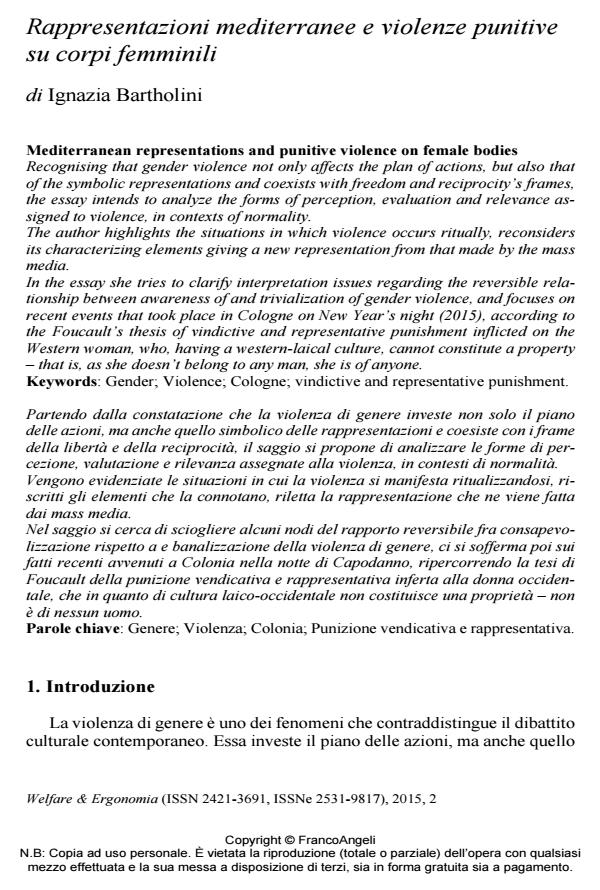Mediterranean representations and punitive violence on female bodies
Journal title WELFARE E ERGONOMIA
Author/s Ignazia Bartholini
Publishing Year 2017 Issue 2015/2
Language Italian Pages 10 P. 278-287 File size 170 KB
DOI 10.3280/WE2015-002023
DOI is like a bar code for intellectual property: to have more infomation
click here
Below, you can see the article first page
If you want to buy this article in PDF format, you can do it, following the instructions to buy download credits

FrancoAngeli is member of Publishers International Linking Association, Inc (PILA), a not-for-profit association which run the CrossRef service enabling links to and from online scholarly content.
Recognising that gender violence not only affects the plan of actions, but also that of the symbolic representations and coexists with freedom and reciprocity’s frames, the essay intends to analyze the forms of perception, evaluation and relevance assigned to violence, in contexts of normality. The author highlights the situations in which violence occurs ritually, reconsiders its characterizing elements giving a new representation from that made by the mass media. In the essay she tries to clarify interpretation issues regarding the reversible relationship between awareness of and trivialization of gender violence, and focuses on recent events that took place in Cologne on New Year’s night (2015), according to the Foucault’s thesis of vindictive and representative punishment inflicted on the Western woman, who, having a western-laical culture, cannot constitute a property - that is, as she doesn’t belong to any man, she is of anyone.
Keywords: Gender; Violence; Cologne; vindictive and representative punishment
Ignazia Bartholini, Rappresentazioni mediterranee e violenze punitive su corpi femminili in "WELFARE E ERGONOMIA" 2/2015, pp 278-287, DOI: 10.3280/WE2015-002023